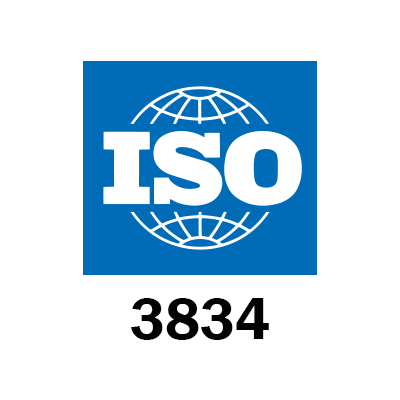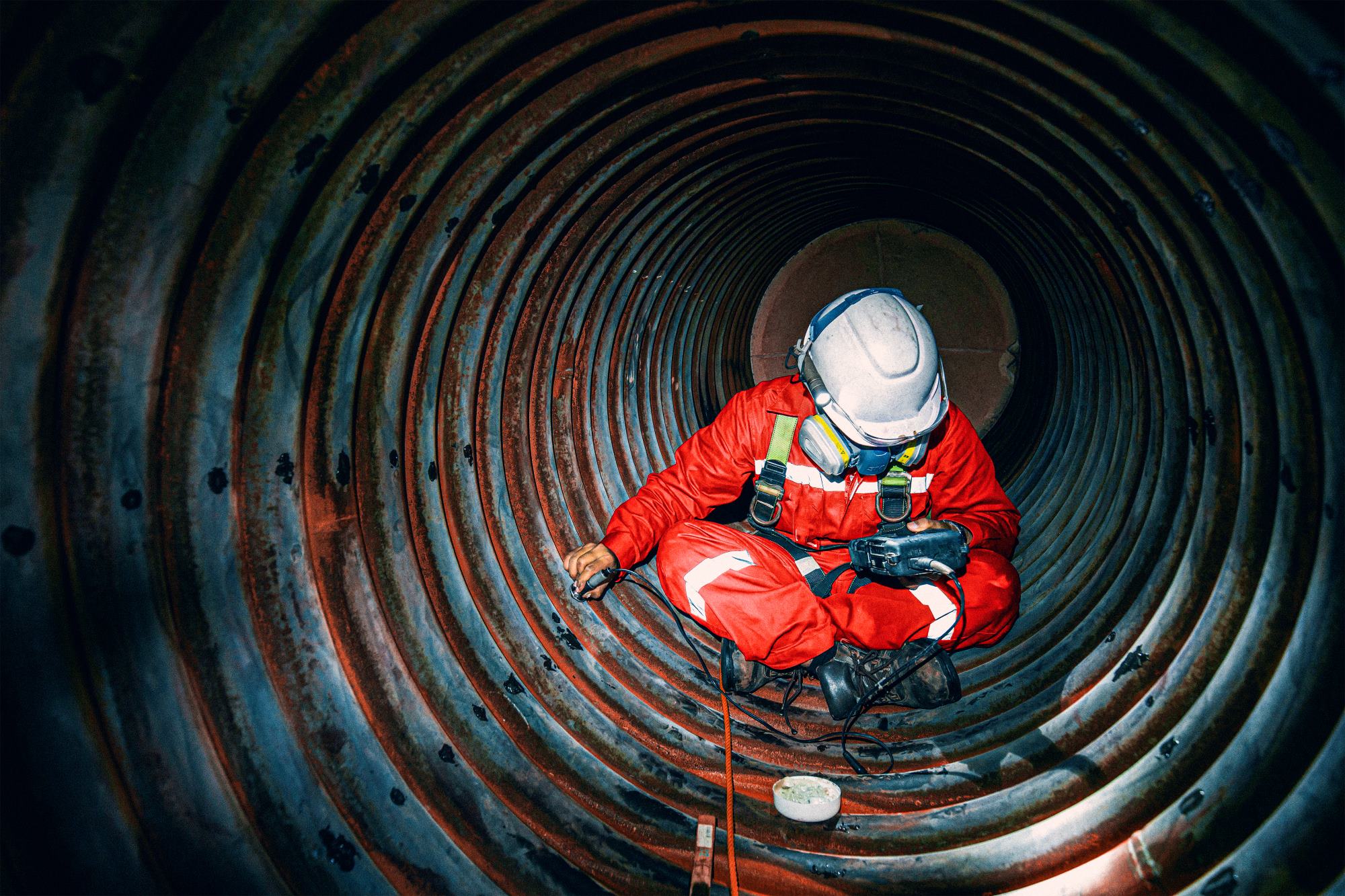The EN ISO 3834 standard is one of the most significant international standards in the field of metal welding. It serves as a comprehensive set of guidelines that help businesses ensure weld quality, enhance safety, and extend product lifespan. For heavy industries such as boiler manufacturing, pressure equipment, steel structures, and the oil and gas sector, applying EN ISO 3834 is not only a technical requirement but also a testament to the manufacturer’s competence and credibility.
1. Origin and Purpose of Application
EN ISO 3834 (Quality Requirements for Fusion Welding of Metallic Materials) is an internationally recognized standard that specifies quality requirements for metal welding processes. Developed by the International Organization for Standardization (ISO) and adopted by the European Committee for Standardization (CEN), it ensures that welded products meet safety and performance expectations.
This standard has a global scope of application, including Vietnam, where it has been adopted as TCVN 7506-2:2011 (ISO 3834-2:2005). Compliance with EN ISO 3834 not only enhances corporate reputation but also expands opportunities for international collaboration and export.
The primary objectives of EN ISO 3834 include:
- Ensuring the quality and durability of welded joints.
- Minimizing the risk of failures during operation.
- Establishing comprehensive control from design, material selection, and welding execution to inspection and acceptance.
- Extending equipment lifespan and reducing maintenance costs.
2. Scope of Application
EN ISO 3834 is applicable across various industrial sectors, particularly in:
Boilers and Pressure Equipment: Used in power plants, refineries, and industrial manufacturing facilities.
Steel Structures and Mechanical Engineering: Ensuring structural integrity and durability for buildings and industrial equipment.
Oil and Gas and Chemical Industry: Applied to storage tanks, pipelines, and high-pressure equipment.
3. Levels of EN ISO 3834
EN ISO 3834 consists of five key parts, with the following three parts being the most critical as they define the levels of quality requirements for welding:
EN ISO 3834-2: Comprehensive Quality Requirements
This is the highest level, applied to products with stringent safety and performance demands, such as boilers, pressure vessels, and critical infrastructure. It requires meticulous control over the entire welding process.
EN ISO 3834-3: Standard Quality Requirements
This level is suitable for projects with moderate risk levels, where quality control remains essential but not as rigorous as in Level 2.
EN ISO 3834-4: Elementary Quality Requirements
Designed for less critical products and components with simpler welding needs that are not subjected to severe working conditions or high pressures.
Additional Parts
- EN ISO 3834-1: Provides a general overview and guidelines for selecting the appropriate quality level.
- EN ISO 3834-5: Lists referenced documents for evaluating welding activities’ compliance.
The appropriate standard level is determined based on the product’s criticality and the specific technical requirements defined in contracts or regulatory frameworks.

4. Why is EN ISO 3834 highly regarded?
EN ISO 3834 is highly valued in the manufacturing of boilers and pressure equipment due to its comprehensive quality management system. It covers every stage, from design, material selection, and welding execution to inspection and final product acceptance. Compliance with EN ISO 3834 ensures high product quality, minimizes operational risks, and optimizes maintenance costs. For manufacturers, the ability to design and produce according to this standard serves as clear proof of their technical competence and commitment to quality.
Below are the key factors that make EN ISO 3834 highly regarded and why certified manufacturers are considered industry leaders:
4.1. High Technical Competence of the Workforce
EN ISO 3834 mandates that welders, engineers, and supervisors possess advanced technical expertise and hold internationally recognized certifications. For critical welds in boilers and pressure equipment, certifications like the 6G welding certification or its equivalent demonstrate the capability to perform welds in all positions and angles.
Moreover, manufacturers adhering to EN ISO 3834 often employ certified Welding Supervisors and Welding Inspectors with qualifications such as International Welding Engineer (IWE) or International Welding Inspector (IWI). This ensures not only the accuracy of welding procedures but also the early detection and rectification of any technical issues during production.
Investing in a highly skilled workforce enables manufacturers to deliver products with superior durability that meet the stringent demands of industries like power generation, oil and gas, and chemicals. For customers, this is a reliable assurance of the equipment’s safety and operational performance.
4.2. Strict Material Control
EN ISO 3834 imposes stringent regulations on material selection and control. Manufacturers must provide Material Test Certificates (MTC) to verify the origin and quality of materials, ensuring compliance with technical specifications for chemical composition, mechanical properties, and heat resistance.
In addition, companies implementing EN ISO 3834 often integrate Material Management Systems (MMS) to track and monitor materials from procurement to final product completion. This not only optimizes production costs but also guarantees that the products meet the specific technical requirements of each project.
Using certified materials extends product lifespan and reduces the risk of leaks or fractures during operation. This is particularly crucial for pressure equipment operating under high temperature and pressure conditions.
4.3. Advanced Non-Destructive Testing (NDT) Methods
One of the standout features of EN ISO 3834 is its requirement for Non-Destructive Testing (NDT) to detect internal or surface defects in welds. Common NDT methods include:
Ultrasonic Testing (UT): Identifies internal defects in materials.
Radiographic Testing (RT): Provides detailed imaging of weld structures, especially for thick joints.
Magnetic Particle Testing (MT): Detects surface cracks or defects in ferromagnetic materials.
Liquid Penetrant Testing (PT): Used for non-ferromagnetic materials to reveal surface flaws like cracks or pores.
Manufacturers complying with EN ISO 3834 employ certified NDT specialists with Level II or Level III qualifications under ASNT or ISO 9712 standards. This ensures accurate and reliable testing, reducing the risk of defective products and lowering long-term maintenance costs for customers.

4.4. Comprehensive Quality Management System
EN ISO 3834 extends beyond the welding process by requiring manufacturers to establish a comprehensive quality management system. This includes:
- Production Process Control: Monitoring and recording data at every stage to ensure strict adherence to design specifications.
- Supplier Evaluation: Collaborating with certified material and service providers to maintain international quality standards.
- Document Management: Maintaining complete product records for easy traceability and verification of inspection history.
- Training and Competency Development: Conducting regular internal training programs to enhance the skills and knowledge of employees.
Manufacturers with a robust quality management system in compliance with EN ISO 3834 not only ensure consistently high-quality products but also build trust and credibility in the global market.
5. EN ISO 3834 Compared to Other Standards
Compared to other international standards like ASME Section IX (USA), JIS Z 3801 (Japan), or API 1104 (American Petroleum Institute), EN ISO 3834 stands out for its flexibility and wide applicability.
- ASME Section IX: Primarily focused on assessing welders and welding procedures, widely used in the oil, gas, and energy sectors.
- JIS Z 3801: Commonly applied in the mechanical and automotive industries in Japan.
- API 1104: Specifically designed for pipeline welding in the oil and gas sector, emphasizing operational safety.
By integrating EN ISO 3834 with standards like EN 13445 (Unfired Pressure Vessels) or EN 12952 (Water Tube Boilers), businesses can ensure optimal solutions for pressure equipment manufacturing.
Compliance with EN ISO 3834 not only guarantees product quality but also enhances a company’s credibility and competitiveness in the international market. If your business is seeking the best solutions for boilers, pressure equipment, or steel structures, choosing products certified to EN ISO 3834 ensures safety and operational efficiency.
Contact Prebecc today for detailed consultation and experience world-class industrial solutions!
